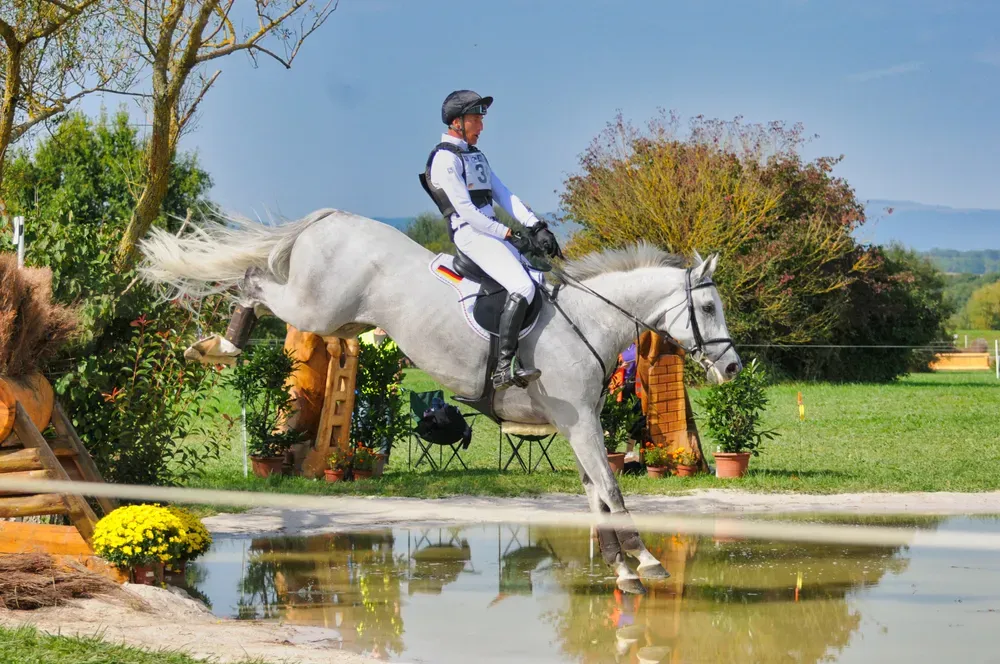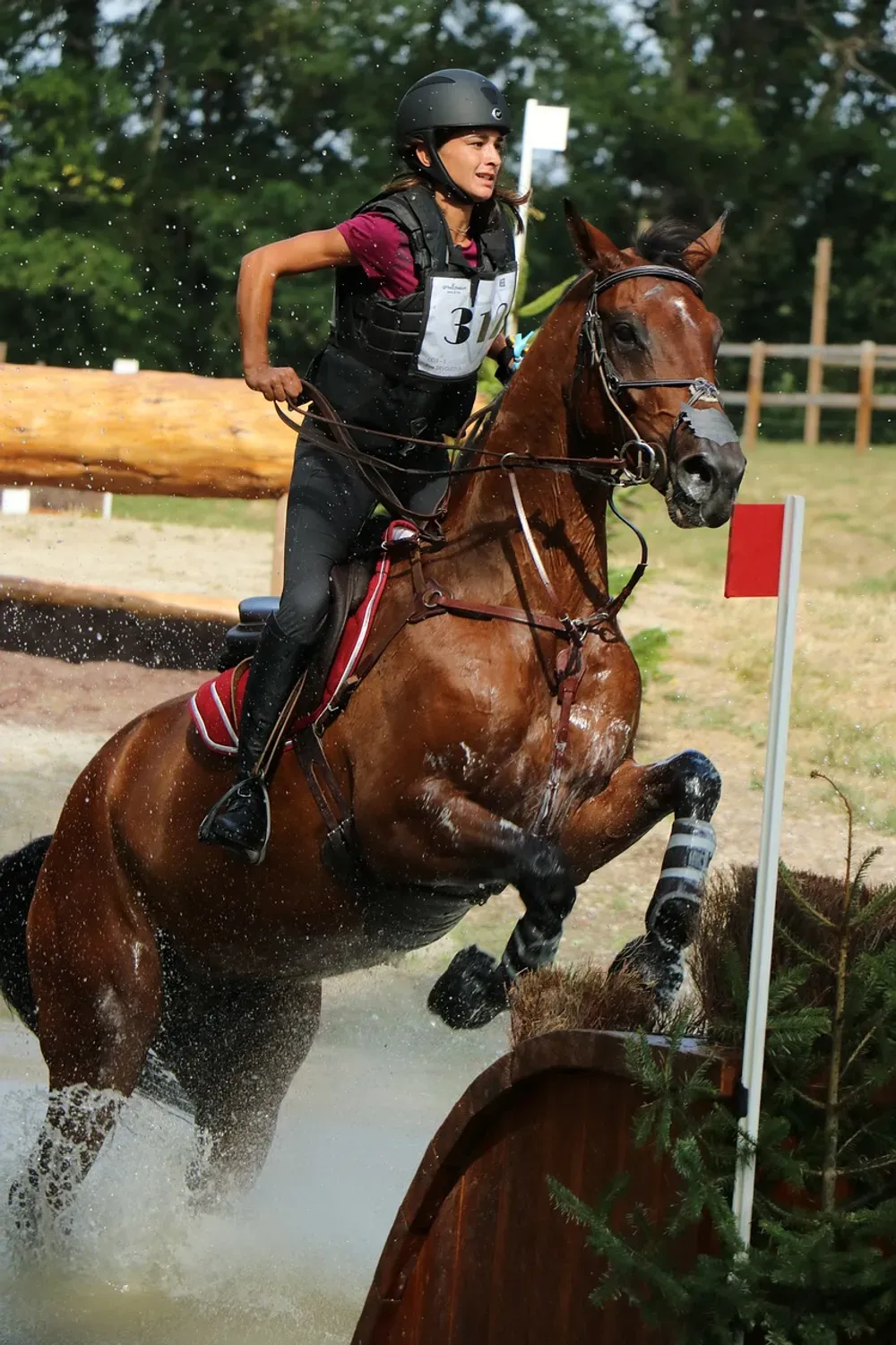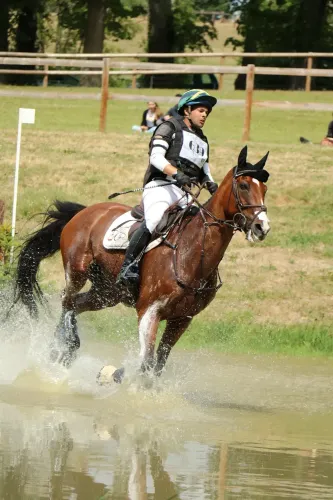
Table of Contents
Introduction
When it comes to conquering the exhilarating world of cross-country riding, every equestrian knows that balance, control, and communication with your horse are paramount. While maintaining steady contact with the reins is crucial in dressage and show jumping, cross-country riding demands a slightly different approach. In this article, we'll explore the importance of slipping the reins and provide you with valuable insights on how to do it effectively.
What is Slipping My Horse's Reins?
As a rider, it is important to understand how to slip your horse's reins. Slipping your horse's reins means permitting his head to stretch down by releasing all pressure and contact on your horse's mouth. You will be riding with your fingers at the buckle end of the reins and permit your horse to have total freedom of movement in his neck and head. However, this is not the same as riding with loose reins while out on a Sunday afternoon hack. Slipping your reins means letting the reins run through your fingers not riding at a slow speed with permanent “washing line reins”.
Why do I need to Slip the Reins?
Cross-country riding involves navigating a challenging terrain filled with jumps, ditches, water crossings, and various natural obstacles. Unlike the controlled environment of a dressage arena, your horse needs more freedom to adapt to the ever-changing conditions during a cross-country course. This is where the skill of slipping the reins comes into play.
- Freedom of Movement: Slipping the reins allows your horse to stretch its neck and use its head and neck for balance. This freedom of movement is crucial for your horse to make quick adjustments when approaching obstacles or uneven ground.
- Balance and Impulsion: Cross-country riding often requires bursts of speed and power. Giving your horse more rein allows it to maintain better balance and impulsion, which is essential for tackling jumps and challenging terrain.
- Trust and Communication: Trust between rider and horse is paramount in cross-country riding. Slipping the reins can be a sign of trust, as you allow your horse to take more responsibility for its own balance and footing while still maintaining communication through your seat and legs.
When should I Slip my Horse's Reins?
Slipping your horse's reins is used when hunting or riding at speed across the country where there are obstacles to be jumped. Typically a rider would slip the reins when jumping downhill or when the horse makes a mistake and needs its head and neck outstretched to rebalance itself.
A rider who accidentally gets behind the horse's movement while jumping will also slip their reins. In horse trials slipping the rein is typically seen when a rider is jumping an obstacle into water. Slipping the rein makes for significantly more safety when riding cross country.
Another situation when you need to slip the reins is when your horse has an unfortunate stumble when working on the flat and this is even possible at a walk.
Do you want your horse to have that extra leg to keep him on his feet?
This is achieved by slipping your reins so that the horse can stretch his neck and sort his legs out to prevent a fall.
Slipping the reins at a water jump
This very experienced and skilled rider is slipping their reins to the buckle end while jumping an obstacle down into the water. They remain in balance and their mount can regain its balance after landing at speed into the water.
When horses travel through water at speed it affects their stride length with some shortening up while others start lengthening their stride. With a horse that lengthens it is hard to gather up the reins before a jump going through the water or out of the water.

Recovering after slipping the reins
This experienced rider has slipped her reins either jumping down into the water or while jumping in the water and is now riding out of the water before she has had the time to gather up the reins. This technique requires real balance and bravery from both the horse and rider. It does not look elegant. nevertheless, it is highly effective and does not hamper the horse.
What is key when slipping the reins while riding cross country?
When slipping the rein you must have balance and this means you must be able to ride at speed without using your hands to steady your position. You must have balance without resting your hands on the horse's neck or using the reins to steady your position. Without finding a balanced position while adopting the forward-jumping seat you will not be able to safely slip your reins. It is vital that the would-be cross-country rider finds a balanced forward seat position. No rider is successful riding cross-country without using a balanced forward seat.

Article Suggestion
A Simple Tip to Improve Rider Balance in the SaddleSomething to remember!
“Your horse must trust that you will do the correct thing for the situation at hand and he will then learn to trust himself. You will then trust your horse and a good connection between you both will develop”.
The take-home Message
In the heart-pounding world of cross-country riding, the ability to slip the reins is a valuable skill that every equestrian should master. It's the delicate balance between control and freedom, allowing your horse to navigate challenging terrain and obstacles with confidence.
Remember, it's not just about giving your horse more rein; it's about building trust, maintaining communication, and ensuring both you and your equine partner have a safe and exhilarating journey.
So, embrace the art of slipping the reins, practice it diligently, and watch as your cross-country rides become a harmonious partnership between rider and horse, filled with thrilling adventures and unforgettable moments.
FAQs
What happens if I get behind my horses movement when my horse takes off over a jump and I do not slip my reins?
How do I learn to approach a downhill jump?
Can I ride cross-country with long stirrups?
What happens if I am in front of my horses movement at take off over a jump?
If my horse stumbles can I use my reins to pull him up?

